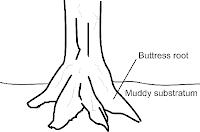1. Lever
a) is a simple machine
b) enables a small effort to overcome a heavy load
c) can be used to lift heavy objects
d) makes work easier
2. A lever has three parts :
a) Fulkrum (F) - the turning point or pivot
b) Effort (E) - the force applied to overcome a resisting force called the load
c) Load (L) - the resisting force exerted by an object
Figure 10.1 Lever
3. Levers can be classified into
a) First class
b) Second class
c) Third class
4. First Class Lever
a) Fulcrum is between the effort and the load
b) Small effort is used to move a large load
c) Effort is further from the fulcrum than load the load is
d) Effort moves through a longer distance than the load
Figure 10.2 First Class Lever
EXAMPLES OF FIRST CLASS LEVER
Scissors
Claw Hammer
Lid opener
Figure 10.3 Examples of First Class Lever
5. Second Class Lever
b) Small effort is used to move a large load
c) Effort is further from the fulcrum than the load is
d) Effort moves through a longer distance than the load
Figure 10.4 Second Class Lever
EXAMPLES OF SECOND CLASS LEVER
Wheel Barrow
Nutcracker
Bottle Cap Opener
Figure 10.5 Examples of Second Class Lever
6. Third Class Lever
a) The effort is between the fulcrum and the load
b) A large effort is used to move a small load
c) Load is further from the fulcrum than the effort is
d) The load moves through a longer distance than the effort
Figure 10.6 Third Class Lever
EXAMPLES OF THIRD CLASS LEVER
Figure 10.7 Examples of Third Class Lever
7. When we loosen a bolt using a spanner, a force that is applied has a turning effect on the spanner
8. This turning effect of a force is known as the moment of a force
Figure 10.8
9. In figure 10.8,
a) It is easier to loosen the bolt if you hold the spanner at position P than Q because the turning effect is greater
b) It is also easier to loosen the bolt if a larger force is applied at P to cause a greater turning effect
10. The turning effect or moment of a force is influenced by
a) the magnitude of the force applied
b) the position of the force applied
11. The S.I unit for measuring the moment of force is Newton-metre (Nm).
Figure 10.9
12. The moment of a force can be calculated by using the formula below :
Moment of a force = Force x Perpendicular distance from the pivot to the force
(Nm) (N) (m)
13. The principle of moments can be represented by the following formula :
Load = Distance of load from the fulcrum = Effort x Distance effort from the fulcrum
(L) (E)
Unit 10.2 Appreciating the Innovative Efforts in the Design of Machines to Simplify Work
1. Human beings make use of the principle of lever to invent machines
2. Innovative efforts in inventing make our work easier
3. Complex machines help us to carry out difficult and tedious work
4. Examples of some machines that are based on the principle of levers are crane, typewriter, pedal bin, pliers, paper cutter and stapler
The end of chapter 10. #

























0 comments:
Post a Comment